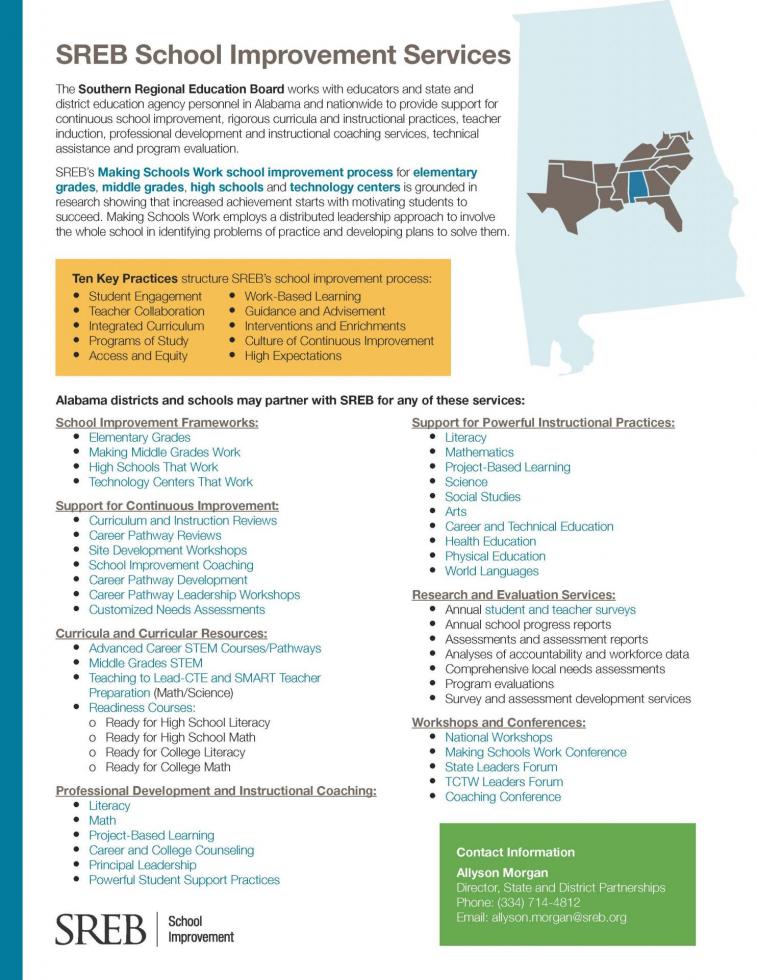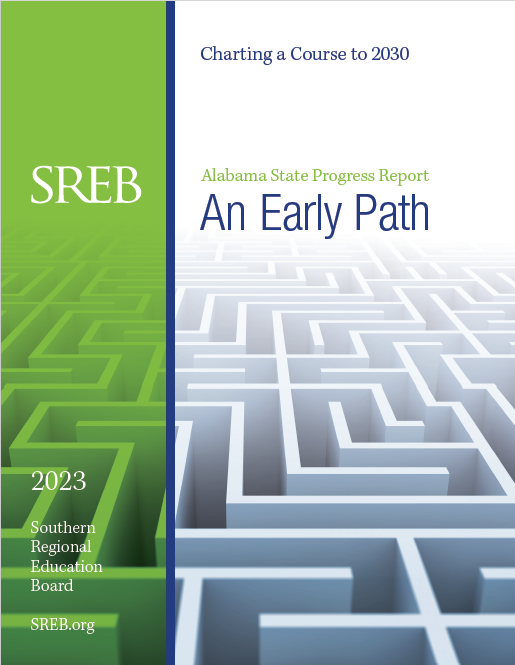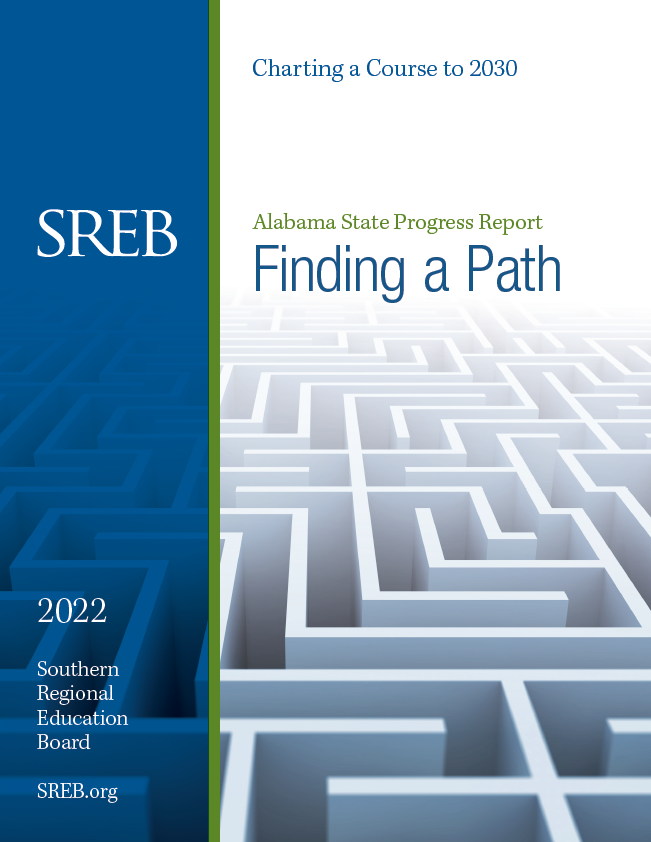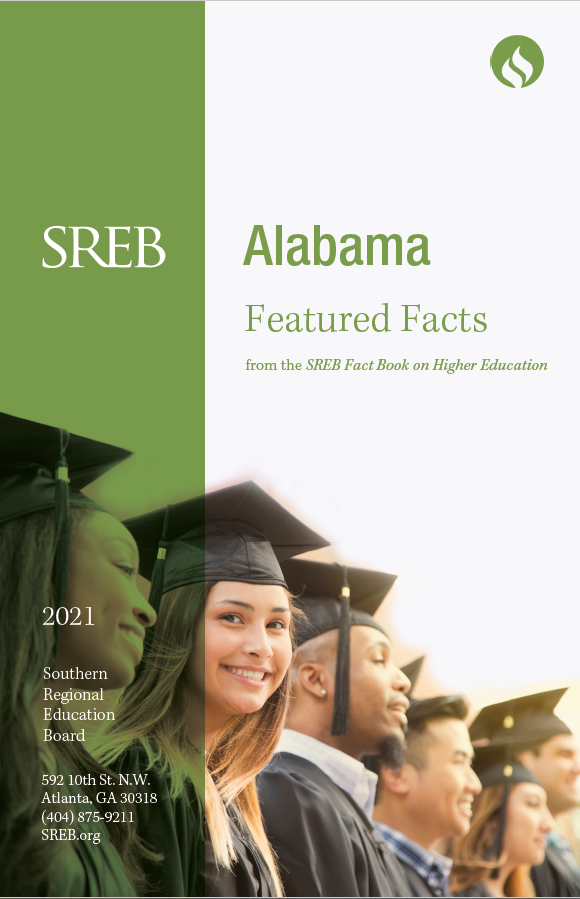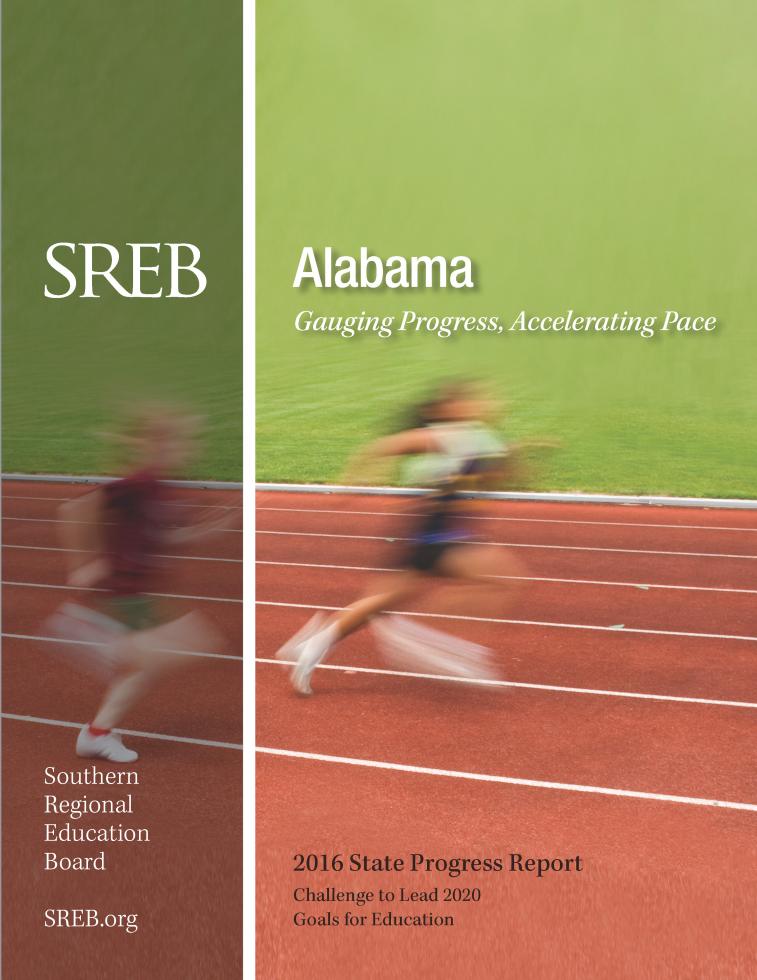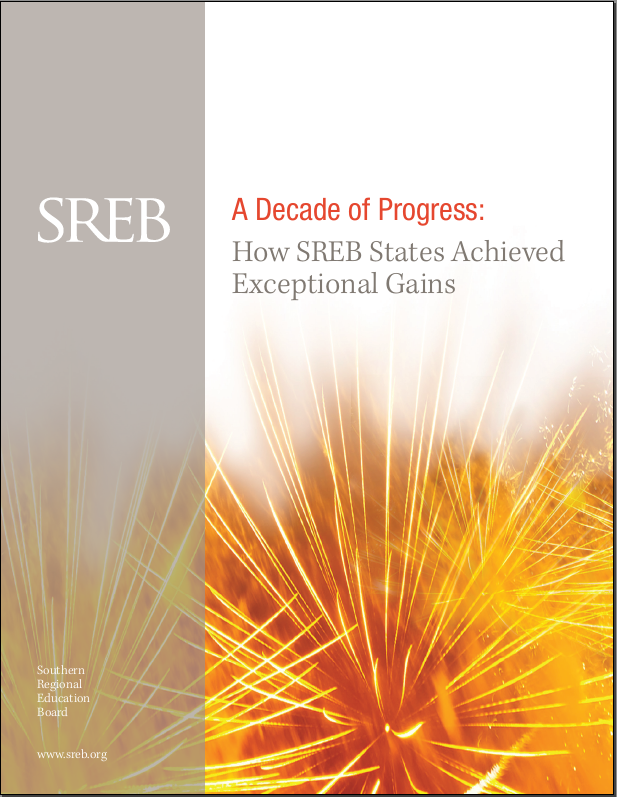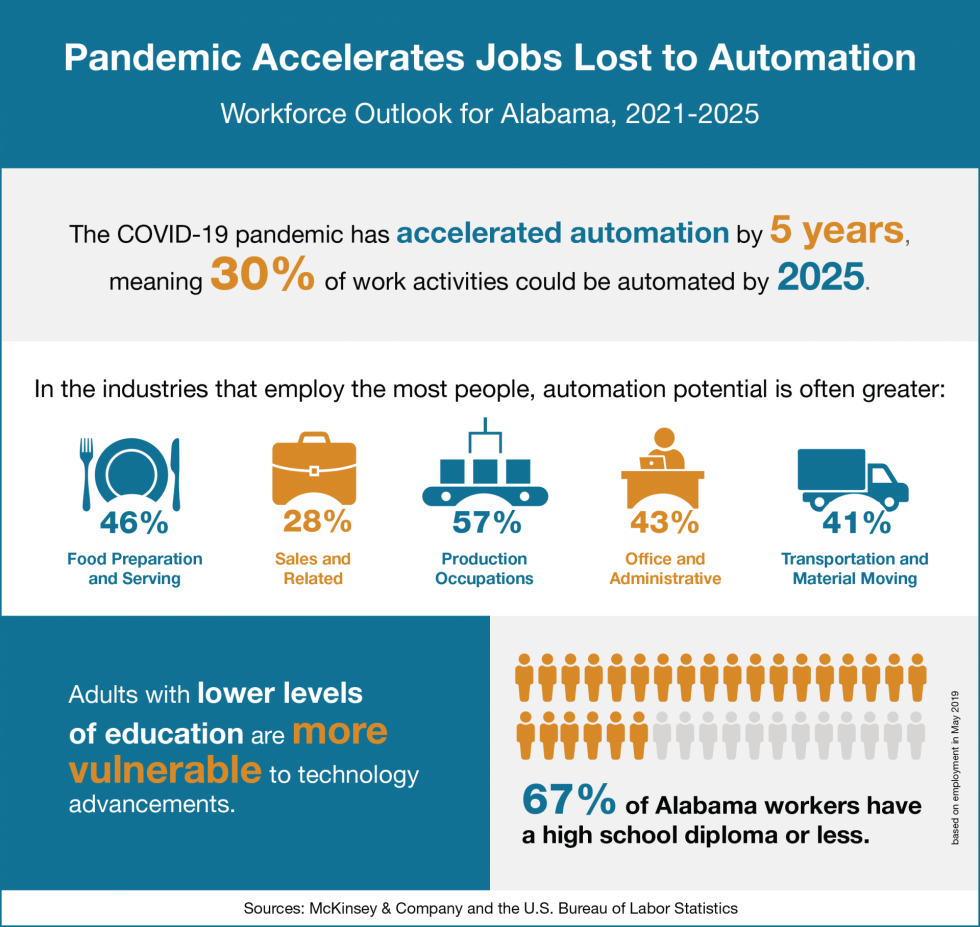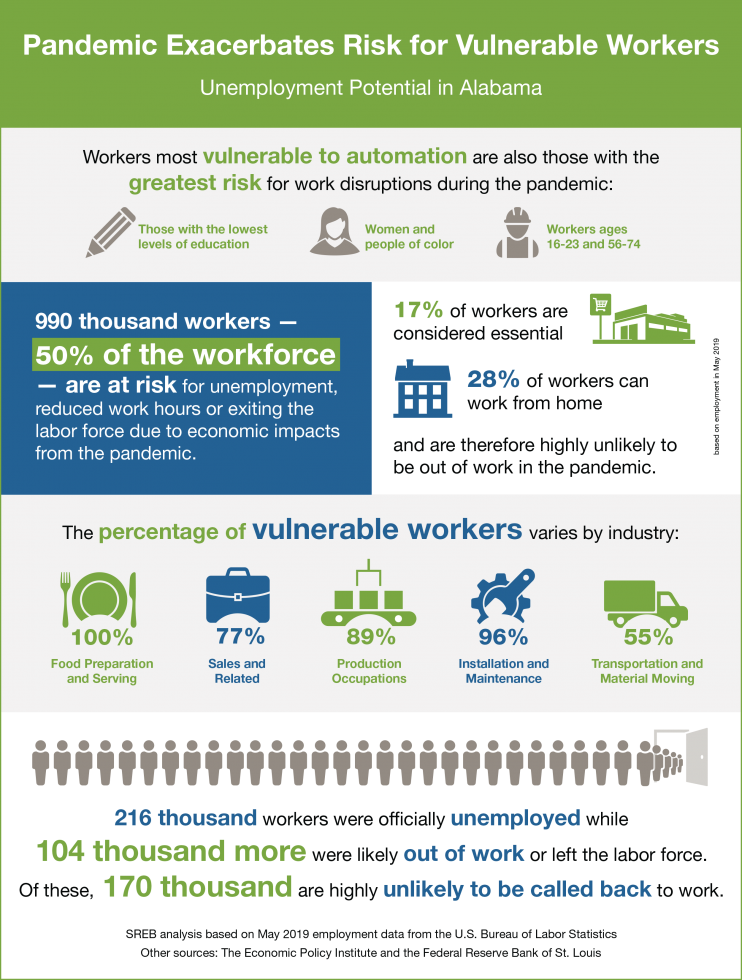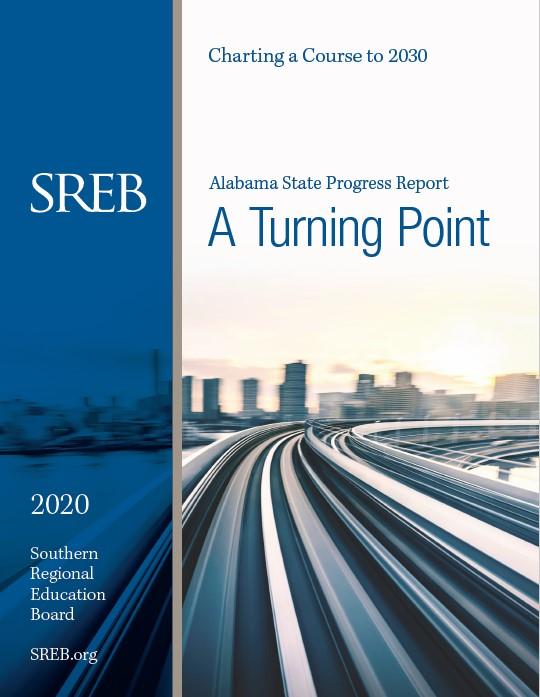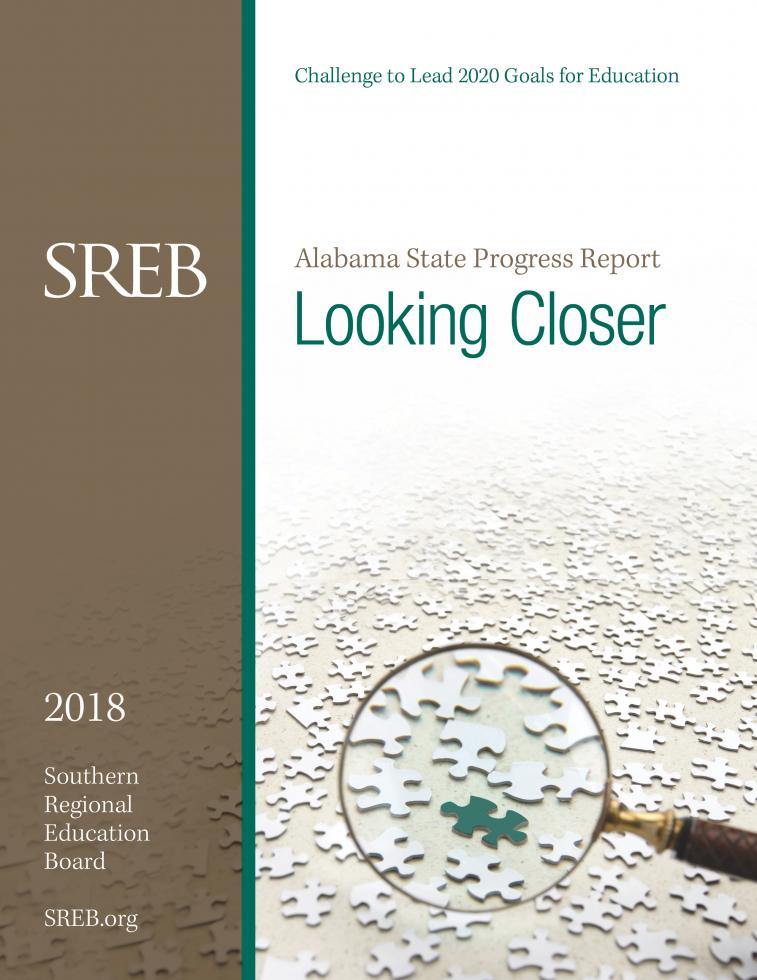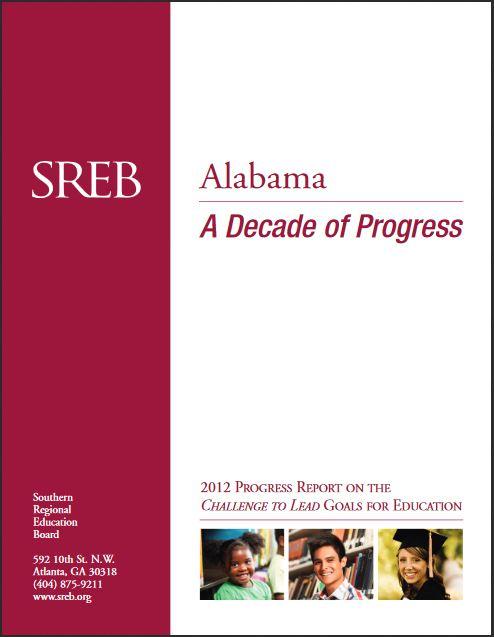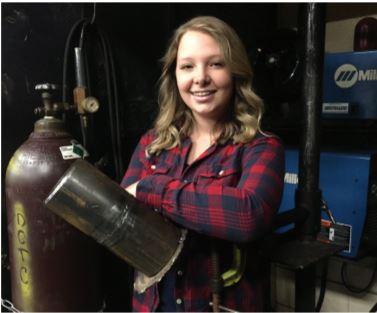State: Alabama
Alabama
Your Guide to Data and Services for Alabama
SREB works with Alabama policymakers, colleges and schools to help them improve education. From this page, find independent, accurate data, reliable best practices and ways to shares scarce resources.
Alabama Members of the Board
Kay Ivey, Governor of Alabama, Montgomery, ex
officio (2027)
Alan Baker, State Representative, Brewton
(2029) Executive Committee member
Terri Collins, State Representative, Decatur
(2027)
Mark Dixon, President, A+ Education Partnership,
Montgomery (2022)
Eric Mackey, State Superintendent of
Education, Montgomery (2028)
(Appointments to the Board are made by the Governor. Terms
expire June 30 of the specified year.)
Alabama Members of the Legislative Advisory Council
Alan Baker, State Representative, Brewton
Terri Collins, State Representative, Decatur
Barbara Drummond, State Representative,
Mobile
Tracy Estes, State Representative, Winfield
Vivian Davis Figures, State Senator, Mobile
Danny Garrett, State Representative, Trussville
Alabama Savings: Tech Purchasing, State Authorization
Alabama saved $1.6 million on $17.7 million in technology purchases in fiscal year 2023 through SREB participation in discount agreements. Details >
Colleges and universities in Alabama save an estimated $1.8 million annually and saved an initial $6.4 million on authorization for distance learning through SARA, the State Authorization Reciprocity Agreement. Details >
Alabama: School Improvement Services
The Southern Regional Education Board works with educators and state and district education agency personnel in Alabama and nationwide to provide support for continuous school improvement, rigorous curricula and instructional practices, teacher induction, professional development and instructional coaching services, technical assistance and program evaluation.
Find out what services are available for Alabama districts and schools in this PDF.
Alabama: An Early Path
An Early Path covers data and policies for each SREB state in Pre-K, elementary and middle grades in 2023. The reports also highlight important demographic data. These are SREB’s 11th progress reports to states on educational progress and the final set for the 2020 Challenge to Lead Goals. Each state report provides comparable data so states can see how they relate to one another, the SREB region and the nation.
Alabama: Finding a Path
Finding a Path covers data and policies for each SREB state’s progress in high school, postsecondary and the workforce. Watch for reports on birth to middle grades in 2023. These are SREB’s 10th biennial reports to states on educational progress and the final set for the 2020 Challenge to Lead Goals. They provide comparable data so states can see how they relate to one another, the Southern region and the nation. New this year: sections on the K-12 teacher and postsecondary workforces.
Alabama Featured Facts
from the SREB Fact Book on Higher Education
Alabama-specific data on population, demographic, education attainment, enrollment, graduation rates, workforce, tuition, debt, funding, faculty salaries and more.
2022 State and District Leadership Awards
SREB recognizes the outstanding leadership efforts of a state and a district that established structures to help schools transform their school and classroom practices and maintain cultures of continuous improvement.
Schools Honored with 2022 Pacesetter Awards
Awards to be presented at the 2022 Making Schools Work Conference
Sixteen schools won 2022 Gene Bottoms Pacesetter School Awards for their efforts to increase quality instruction and raise student achievement.
- Download the press release (PDF)
- Download the press release (PDF)
- Download the press release (PDF)
- Download the press release (PDF)
- Download the press release (PDF)
- Download the press release (PDF)
- Download the press release (PDF)
- Download the press release (PDF)
- Download the press release (PDF)
- Download the press release (PDF)
- Download the press release (PDF)
- Download the press release (PDF)
- Download the press release (PDF)
- Download the press release (PDF)
- Download the press release (PDF)
- Download the press release (PDF)
- Read more
A bridge to college: Alabama students find success through SREB Readiness Courses
Every SREB state needs more students to complete two- and four-year college degrees and earn valuable career credentials.
But how can states build a stronger bridge for students from high school to college?
In partnership with SREB, Alabama’s high schools and community colleges have found a way. The strategy is helping more students succeed and avoid getting stuck in remedial education courses in college — one of the more intractable problems in higher education.
Alabama: Gauging Progress, Accelerating Pace
Gauging Progress, Accelerating Pace is the seventh biennial report to SREB states on their progress in meeting SREB’s Challenge to Lead goals for education. Each customized state report documents progress on both measurable outcomes and state policies. Through effective policy implementation, the goals can help states drive improvements in student achievement, high school graduation, college completion and workforce readiness.
Alabama
College Affordability Profile
The SREB College Affordability Profiles provide state stakeholders with data-driven insights into the cost of higher education and its impact on students and families. These profiles highlight key affordability metrics for each of the 16 SREB states, including net price across different types of institutions, state financial aid per student, student borrowing patterns, and trends in state appropriations and tuition and fees per full-time equivalent student.
Alabama Teacher Quantity and Quality Roundtable
Final Report
Alabama, like many states across the country, continues to face teacher shortages in its public education system. While the state legislature has passed various measures to help in the short term, state leaders agree that long-term strategies are needed to retain and recruit a high-quality teacher workforce. This final report from the Alabama Teacher Quantity and Quality Roundtable outlines its recommended three-pronged approach, which focuses on career pathways, early-career support and advancement opportunities.
A Decade of Progress
How SREB States Achieved Exceptional Gains
How five states — Alabama, Kentucky, Maryland, Tennessee and Texas — made exceptional progress in student achievement during the first decade of the 21st century.
Alabama
2020 State Workforce Outlook
Alabama: A Turning Point
A Turning Point is the ninth biennial report to SREB states on their progress in meeting SREB’s Challenge to Lead goals for education. The 2020 report focuses on Charting a Course to 2030 — evaluating how well states are preparing their workforces for the future economy. Each customized state report documents advancement on both measurable outcomes and state policies. Through effective policy implementation, the goals can help states drive improvements in student achievement, high school graduation, college completion and workforce readiness.
Alabama: Looking Closer
Looking Closer is the eighth biennial report to SREB states on their progress in meeting SREB’s Challenge to Lead goals for education. Each customized state report documents progress on both measurable outcomes and state policies. Through effective policy implementation, the goals can help states drive improvements in student achievement, high school graduation, college completion and workforce readiness.
Alabama: A Decade of Progress
This report outlines a decade of the state’s progress toward meeting SREB’s Challenge to Lead education goals. Data on key education measures for each of the 12 goals are presented, with commentary that puts the information in a regional and national context. The lead figures on each page also are available as PowerPoint slides at http://www.sreb.org/index.html
2020 State and District Leadership Awards
SREB recognizes the outstanding leadership efforts of a state and a district that established structures to help schools transform their school and classroom practices and maintain cultures of continuous improvement.
Schools Honored with 2020 Pacesetter Awards
Awards to be presented at the 2021 Making Schools Work Conference
Twenty-three schools won 2020 Gene Bottoms Pacesetter School Awards for their efforts to increase quality instruction and raise student achievement.
- Download Asbury High School
- Download Bethel-Tate Middle School
- Download Choffin Career and Technical Center
- Download Deer Park Junior/Senior High School
- DeKalb County Technology Center
- Download Easley High School
- Download Excelsior Springs Area Career Center
- Download Gordon Cooper Technology Center
- Download Harding Middle School
- Download Hueytown High School
- Download Indian Valley High School
- Download Mahoning County Career & Technical Center
- Download Mid-America Technology Center
- Download Moore High School
- Download Nicholas County Career and Technical Center
- Download Northland Career Center
- Download Penta Career Center
- Download Pickens County Career & Technology Center
- Download Riverside Academy
- Download Springboro High School
- Download Sumter Career and Technology Center
- Download Whale Branch Early College High School
- Download Williamsburg High School
- Read more
With School Network, SREB Will Seek Math Solutions
Birmingham-area schools focus on 8th and 9th grade math
Twelve schools in Jefferson County, Alabama, are working together to improve 8th and 9th grade math through a Bill & Melinda Gates Foundation grant to the Southern Regional Education Board.
CTE Dual Enrollment That Works
“Some of our students have never set foot on a college campus,” says Jonathan Phillips, director of the DeKalb County Technology Center in Rainsville, Alabama.
That’s a point of pride at DCTC. Although the center is known for providing quality career and technical education courses and industry credentials, it also offers academic courses that satisfy graduation requirements and dual enrollment courses that put students on the fast track to credential and degree attainment.
Arkansas, Alabama And Missouri Educators, South Carolina School Win National Readiness Awards
Leadership in preparing students for success in high school and after
Three educators and a South Carolina high school were honored this week with Southern Regional Education Board awards. These recognize outstanding teaching and leadership with SREB Readiness Courses, which help underprepared students succeed in high school and postsecondary studies. The winners were honored at SREB’s Readiness Courses Institute in Orlando, Florida.
Educators Win 2018 Literacy and Math Awards at National Conference
These teachers, trainers, schools and districts were honored for their outstanding literacy and math practices at SREB’s College- and Career-Readiness Standards Networking Conference July 9, 2018 in Orlando, Florida.


